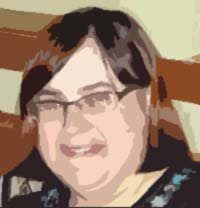I am in the choir and I am preaching because Mills gets it right! Information literacy leads to lifelong learning. This post is a response for my graduate class, so if you want to stop reading feel free. But, if you stop reading you will be missing an amazing resource for Information Literacy. In fact, chapter 5 of Steven C. Mills’s book Using the Internet for Active Teaching and Learning, is called “Locating and Evaluating Information on the Internet” but it reads like it should be called: What every librarian wants the teachers in her school to know about searching the Internet but they never ask!
The basic premises Mills sets as the tone of the entire chapter, there are no quality controls for the Internet, anyone can publish anything they want, and the Internet is full of inaccuracies. Our students don’t understand this concept and are far too willing to believe whatever they read on the Internet. I do not doubt that the same thing could be said for some of us. Yes, even teachers can get caught up in misinformation, it is all over the Internet. So, what can be done? Here is where the preaching to the choir part comes in… as a librarian believe it or not, I did know much of the information presented by Mills… so what? So, it is up to librarians to teach the strategies Mills suggests, not only to students but to teachers as well. As Washington Post staff writer Linton Weeks says, “In the nonstop tsunami of global information, librarians provide us with floaties and teach us how to swim.”
The first source of information Mills points to locate education information on the Internet are virtual and digital libraries, then he points to professional standards organizations, government resources, the RTECs, online encyclopedias, educational content sites, electronic online journals, then searchable databases, and then finally commercial search engines. As a librarian that pays for online encyclopedias and specialized databases for my students, I would prefer they go there first since I chose those resources for them to use but heck, I can’t argue with the hierarchy Mills sets up. Virtual libraries like the Librarians Index to the Internet and The Internet Public Library are the sites I use myself, they are go-to resources for me and I cannot do what I do as a librarian without the digital library resources of the Library of Congress. But the best virtual library in the area belongs to Montgomery County's Springfield School District, thanks to their librarian Joyce Valenza.
I must admit that I do not use all of the professional organizations that Mills mentions in the chapter but I can not live without the National Council of Teachers of English’s website, and the Read-Write-Think website that they sponsor along with the International Reading Association has many resources that I love to use on the SMART Board. My favorite however is Fact Fragment Frenzy. I love to use this site right after students have finished gathering their research material. We watch the tutorial and then we use one of the sample files and pull out the information and make our own sentences, the students love to write on the SMART Board. It is an excellent resource to teach students how to paraphrase and not plagiarize.
While some government resources are great for kids, others are better to use in middle and high school settings. The Regional Technology in Education Consortia is something I need to find more about. The encyclopedias mentioned in the chapter are all excellent resources. Encarta is often provided to schools for free with their paid Microsoft licenses. Pennsylvania’s POWER Library provides resources from the Columbia Encyclopedia, which is also incorporated in the Information Please site. I do often encourage my students to use Information Please because it incorporates an almanac, dictionary, and the Columbia Encyclopedia. I still contend that students are better off when they stick to the resources that their librarians pay for them to use. It will save them from getting frustrated when they can’t read the entire article, or they only get condensed versions of articles like those at Encyclopedia Britannica.
The educational content sites that Mills mentions are better resources for teachers than students. I personally use Discovery School, Education World, the Educator’s Desk Reference, EduScapes, and PBS when I am looking for library lesson material. But I also use Annette Lamb's site. When I need to find journal articles, I must admit that I do not go to the web first. I tend to go first to my university library’s site or my high school library’s online electronic resources. They are paid for, if I go to a website and I find the perfect abstract, sometimes they ask me to pay for the article. I am not a fan of paying for information that I can get free because my library has already paid for the databases.
I feel like I am giving away some of my secrets by mentioning these sites here, and reviewing this chapter in the Mills book. Maybe the teachers in my school will read it and realize I am not the miracle worker they think I am!
Saturday, November 17, 2007
Subscribe to:
Post Comments (Atom)



1 comment:
Hi Janice,
There is no information wizard behind the main library desk!?!?!? (Shock and dismay!) Your point is well-made that the audience for this Mill’s chapter is teachers more than learners. But your reflection upon his offerings widens the conversation and reinforces the social aspects of learning. So, thanks for sharing.
SG
Post a Comment